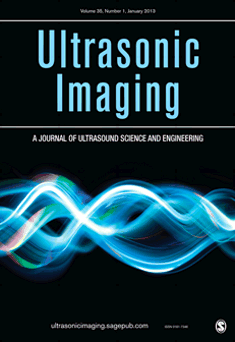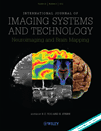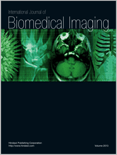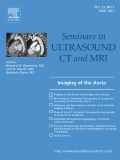
Journal of X-Ray Science and Technology
Scope & Guideline
Charting New Frontiers in X-Ray Applications
Introduction
Aims and Scopes
- X-ray Imaging Techniques:
Research dedicated to the development and enhancement of various X-ray imaging techniques, including computed tomography (CT), phase contrast imaging, and digital radiography. - Artificial Intelligence and Machine Learning Applications:
The journal emphasizes the use of artificial intelligence (AI) and machine learning techniques for improving diagnostic accuracy, image processing, and segmentation in medical imaging. - Dosimetry and Radiation Safety:
Studies focusing on dosimetry, radiation dose optimization, and safety in X-ray procedures, aiming to minimize patient exposure while maintaining image quality. - Clinical Applications and Diagnostics:
Research that bridges the gap between technology and clinical practice, including studies on the effectiveness of X-ray imaging in diagnosing various diseases and conditions. - Innovative Computational Methods:
The journal publishes papers that explore novel computational methods for enhancing image quality, reducing artifacts, and improving diagnostic capabilities in X-ray imaging. - Multimodal Imaging and Fusion Techniques:
Research on integrating X-ray imaging with other modalities (e.g., MRI, CT, ultrasound) to enhance diagnostic capabilities through multimodal imaging and data fusion.
Trending and Emerging
- Deep Learning and AI in Medical Imaging:
There is a growing trend in utilizing deep learning and AI algorithms for enhancing image processing, segmentation, and diagnosis in medical imaging, indicating a shift towards more automated and accurate diagnostic tools. - Advanced Image Reconstruction Techniques:
Emerging research focuses on novel image reconstruction methods, particularly those that leverage deep learning and advanced algorithms to improve image quality and reduce artifacts in low-dose CT imaging. - Radiomics and Predictive Analytics:
The integration of radiomics with predictive analytics is trending, with researchers exploring how imaging features can predict clinical outcomes and treatment responses in various cancers. - Interdisciplinary Approaches to Imaging:
There is an increasing emphasis on interdisciplinary research that combines insights from radiology, engineering, and computer science to enhance imaging technologies and applications. - Real-Time Imaging and Monitoring:
Recent studies are exploring real-time imaging techniques and their applications in monitoring disease progression and treatment efficacy, highlighting the importance of timely interventions in clinical settings.
Declining or Waning
- Traditional Imaging Techniques:
There has been a noticeable reduction in research focusing on traditional X-ray imaging techniques without advanced computational methods, as the field shifts towards more sophisticated imaging modalities and analysis. - Basic Radiography Studies:
Research centered solely on basic radiography is declining, likely due to the increasing complexity and integration of imaging technologies that provide advanced diagnostic capabilities. - Conventional Dosimetry Methods:
The focus on traditional dosimetry techniques is waning as newer, more accurate methods and technologies for measuring radiation exposure are being developed and adopted. - Non-Clinical Applications of X-ray Technology:
Research focusing on non-clinical applications of X-ray technology, such as industrial imaging, is becoming less frequent in favor of studies that emphasize clinical relevance and patient outcomes. - Low-Dose Imaging without AI Enhancement:
There is a decreasing trend in studies that discuss low-dose imaging techniques without the incorporation of advanced AI or machine learning approaches, as these technologies gain prominence.
Similar Journals

QUARTERLY JOURNAL OF NUCLEAR MEDICINE AND MOLECULAR IMAGING
Exploring Innovations in Molecular Imaging Techniques.The Quarterly Journal of Nuclear Medicine and Molecular Imaging, published by Edizioni Minerva Medica in Italy, serves as a pivotal platform for researchers and practitioners in the fields of Nuclear Medicine and Molecular Imaging. With an ISSN of 1824-4785 and an E-ISSN of 1827-1936, this journal boasts a respectable impact factor and is positioned in the Q3 quartile of the Radiology, Nuclear Medicine and Imaging category, based on the latest 2023 evaluations. As the journal continues to converge from its inception in 2004 to its anticipated expansions through 2024, it aims to disseminate high-quality, peer-reviewed articles that advance the frontier of imaging technologies and their applications in clinical practice. Researchers, professionals, and students are encouraged to contribute to its diverse scope, which encompasses innovative research, clinical findings, and reviews that encapsulate cutting-edge advancements in the field, highlighting its importance as an essential resource for knowledge and collaboration.

ULTRASONIC IMAGING
Elevating Ultrasound Applications in Clinical PracticeULTRASONIC IMAGING, published by SAGE PUBLICATIONS INC, is a leading journal within the fields of Radiology, Nuclear Medicine, and Imaging, with a particular focus on advancing the science and application of ultrasound technology. Since its inception in 1979, the journal has provided a platform for high-quality research, featuring innovative studies that bridge theoretical advancements and practical applications, making it an essential resource for researchers and professionals. With a notable impact factor reflecting its robust contribution to the medical community (2023: Q2 rankings in both Radiological and Ultrasound Technology and Radiology, Nuclear Medicine, and Imaging), ULTRASONIC IMAGING serves to disseminate pivotal developments in diagnostic imaging techniques, enhancing the understanding of ultrasound's role in patient care. Researchers are encouraged to explore this journal's collection of cutting-edge articles that push the boundaries of knowledge in ultrasound imaging and its implementation in clinical practices.

INTERNATIONAL JOURNAL OF IMAGING SYSTEMS AND TECHNOLOGY
Innovating the Landscape of Imaging SystemsINTERNATIONAL JOURNAL OF IMAGING SYSTEMS AND TECHNOLOGY, published by Wiley, is a leading journal dedicated to advancing the field of imaging systems and technologies. With an ISSN of 0899-9457 and E-ISSN 1098-1098, this esteemed journal offers a platform for high-quality research spanning essential interdisciplinary areas, including Biomedical Engineering, Computer Science, and Health Informatics. Recognized for its impactful contributions, it holds a commendable position in the Q2 quartile across multiple categories as of 2023. The journal boasts an excellent Scopus ranking, with notable acknowledgments like rank #49 out of 333 in Radiology, Nuclear Medicine, and Imaging, showcasing its relevance and importance in the academic community. Publishes annually from 1989 to 2024, it aims to bridge gaps in knowledge and foster innovative developments through rigorous peer-reviewed articles. Though it operates under a traditional access model, the journal maintains an accessible repository of cutting-edge research, making it indispensable for researchers, professionals, and students alike seeking to stay at the forefront of imaging technology advancements.

JOURNAL OF DIGITAL IMAGING
Pioneering Research in Digital Imaging ApplicationsJOURNAL OF DIGITAL IMAGING, published by Springer, is a premier journal dedicated to the field of digital imaging, encompassing significant developments in the intersecting disciplines of radiology, computer science applications, and ultrasound technology. With its impressive Q1 ranking in the categories of Radiology, Nuclear Medicine and Imaging, and Radiological and Ultrasound Technology, and a substantial Q2 ranking in Computer Science Applications, this journal is positioned at the forefront of research dissemination in these vital areas. The ISSN 0897-1889 and E-ISSN 1618-727X signify its broad reach and accessibility, while its Scopus rankings demonstrate its robust impact in the academic community, ranked #41/333 in Radiology and earning a notable 87th percentile status. Since its inception in 1988, the journal has served as a vital resource for researchers and professionals seeking to advance their understanding of digital imaging technologies and their applications. Although it does not currently offer open access options, it continues to foster scholarly dialogue and innovation, making it an indispensable platform for those committed to excellence in imaging science and technology.

International Journal of Biomedical Imaging
Empowering Innovation in Medical VisualizationInternational Journal of Biomedical Imaging, published by HINDAWI LTD, stands as a pivotal resource in the field of biomedical imaging, bridging the gap between technological innovation and clinical application. Since its inception in 2006 as an Open Access journal, it has become accessible to a global audience, facilitating research dissemination and collaboration. The journal has garnered recognition within the academic community, achieving a notable Q2 category ranking in Radiology, Nuclear Medicine, and Imaging, with an impressive Scopus rank of 16 out of 333, placing it in the 95th percentile of its field. With coverage from 2006 to 2024, the journal encompasses a broad spectrum of studies focused on advancements in imaging technologies, methodologies, and clinical applications, making it an indispensable source for researchers, professionals, and students eager to stay at the forefront of biomedical imaging innovation.

ANNALS OF NUCLEAR MEDICINE
Unveiling the Science of Imaging and TreatmentANNALS OF NUCLEAR MEDICINE is a prominent academic journal dedicated to the field of nuclear medicine, published by Springer. With a rich publication history dating back to 1987 and continuing through 2024, this journal serves as a vital resource for researchers and practitioners interested in the latest developments in nuclear imaging, radiopharmaceuticals, and therapeutic applications. Ranked in the second quartile (Q2) for both Medicine (miscellaneous) and Radiology, Nuclear Medicine, and Imaging categories in 2023, it maintains a strong position in the academic community, with an impressive Scopus rank of #104 out of 333 in its field, placing it in the 68th percentile. The journal is not open access but offers a range of access options through institutional or individual subscriptions, ensuring that critical research findings reach a wide audience. By fostering high-quality, peer-reviewed articles, ANNALS OF NUCLEAR MEDICINE plays a crucial role in advancing the understanding and practical application of nuclear medicine techniques, making it an essential journal for professionals and students aiming to stay at the forefront of this evolving discipline.

Radiological Physics and Technology
Exploring the intersection of medicine and physics.Radiological Physics and Technology, published by SPRINGER JAPAN KK, is a prominent journal that serves as a crucial resource in the multidisciplinary fields of medicine and radiation sciences. With an ISSN of 1865-0333 and an E-ISSN of 1865-0341, the journal has been converging impactful research from 2008 to 2024. It holds a commendable position in academic rankings, currently classified in Q2 in Physical Therapy, Sports Therapy and Rehabilitation and Radiation, along with Q3 for Medicine (miscellaneous) and Radiology, Nuclear Medicine and Imaging. The journal is well-regarded in the academic community, reflected in its Scopus rankings that place it in the upper tiers of its respective categories. Although it currently does not offer Open Access, Radiological Physics and Technology remains a pivotal publication for researchers, academics, and practitioners seeking to advance knowledge and foster innovation in radiological science. Its commitment to disseminating high-quality research ensures its continued relevance and importance within these fields.

Molecular Imaging
Connecting Science and Imaging for a Healthier Tomorrow.Molecular Imaging is a prominent journal published by SAGE Publications Inc., which serves as a vital platform for the dissemination of high-quality research in the field of molecular imaging. With an E-ISSN of 1536-0121, this journal has established itself within several key areas, including Biomedical Engineering, Biotechnology, Condensed Matter Physics, Molecular Medicine, and Radiology, Nuclear Medicine and Imaging. Spanning from 2002 to 2024 and currently classified within the prestigious Q2 and Q3 quartiles, Molecular Imaging aims to highlight the latest developments and innovative methodologies in molecular imaging techniques and applications. Researchers from diverse backgrounds will find the journal's content valuable for staying updated with recent advancements, evidenced by its competitive Scopus ranking and a commitment to fostering interdisciplinary collaboration. Although the journal is not open access, the rigorous peer-review process ensures that all published articles provide significant contributions to the field, making it an essential resource for professionals, researchers, and students alike.

EUROPEAN JOURNAL OF RADIOLOGY
Innovating Radiology for a Healthier FutureThe European Journal of Radiology, published by Elsevier Ireland Ltd, is a premier peer-reviewed journal in the fields of radiology, nuclear medicine, and imaging. Established in 1981, it has carved a significant niche within the academic community, showcasing innovative research that enhances medical imaging practices and improves patient care. With an impressive ranking in the Q1 category for both Medicine (miscellaneous) and Radiology, Nuclear Medicine, and Imaging in 2023, the journal is recognized globally for its commitment to advancing scientific knowledge and improving imaging methodologies. The journal's Scopus ranking of #60/333, placing it in the 82nd percentile, underlines its reputation for high-quality research and scholarly contributions. While traditionally a subscription-based journal, it continually evolves to meet the demands of the academic landscape, aiming to bridge the gap between research and clinical practice. Researchers, healthcare professionals, and students alike can benefit from exploring its extensive archives and current publications, which are curated to foster education and innovation in the medical imaging domain.

SEMINARS IN ULTRASOUND CT AND MRI
Innovating Insights in Ultrasound, CT, and MRISEMINARS IN ULTRASOUND CT AND MRI is a prestigious academic journal dedicated to advancing the fields of radiology, nuclear medicine, and imaging. Published by W B SAUNDERS CO-ELSEVIER INC, this journal has been a cornerstone of scholarly communication since 1984, providing a platform for high-quality research and review articles that enhance the understanding of diagnostic imaging techniques. With a current impact factor reflected in its Q3 quartile ranking among 333 journals in its category, it remains a valuable resource for researchers and clinicians alike. The journal's focus includes but is not limited to innovations in ultrasound, computed tomography, and magnetic resonance imaging, making it essential for professionals looking to stay at the forefront of imaging science. While it operates under a subscription model, its extensive archive of influential articles ensures ongoing access to critical knowledge and developments in the field. With a commitment to quality and relevance, SEMINARS IN ULTRASOUND CT AND MRI continues to contribute significantly to the evolving landscape of medical imaging.